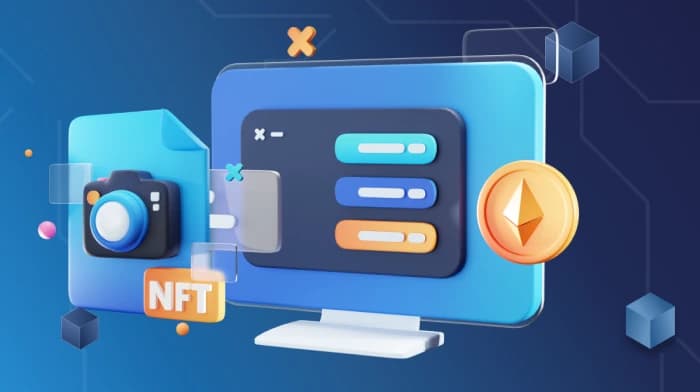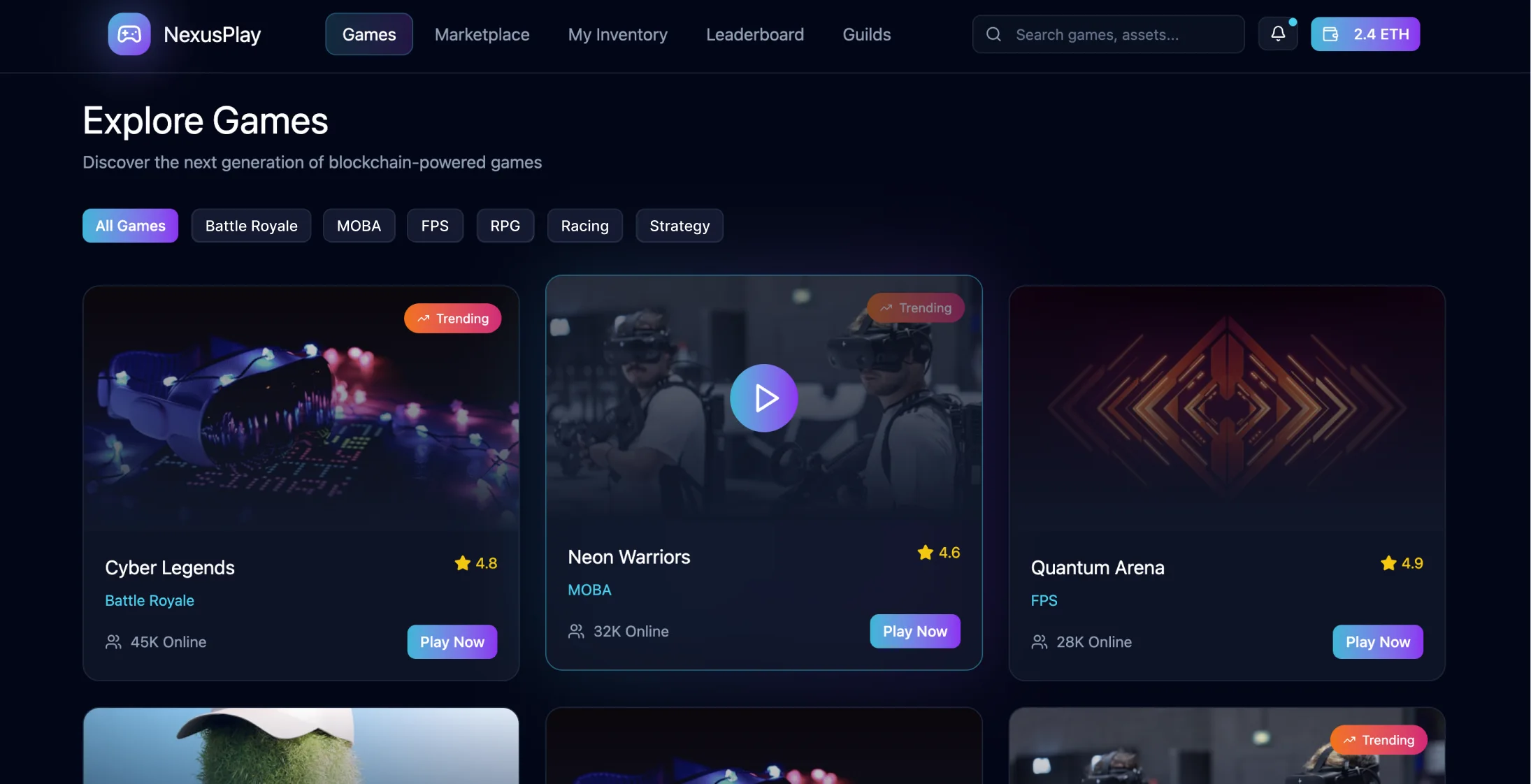
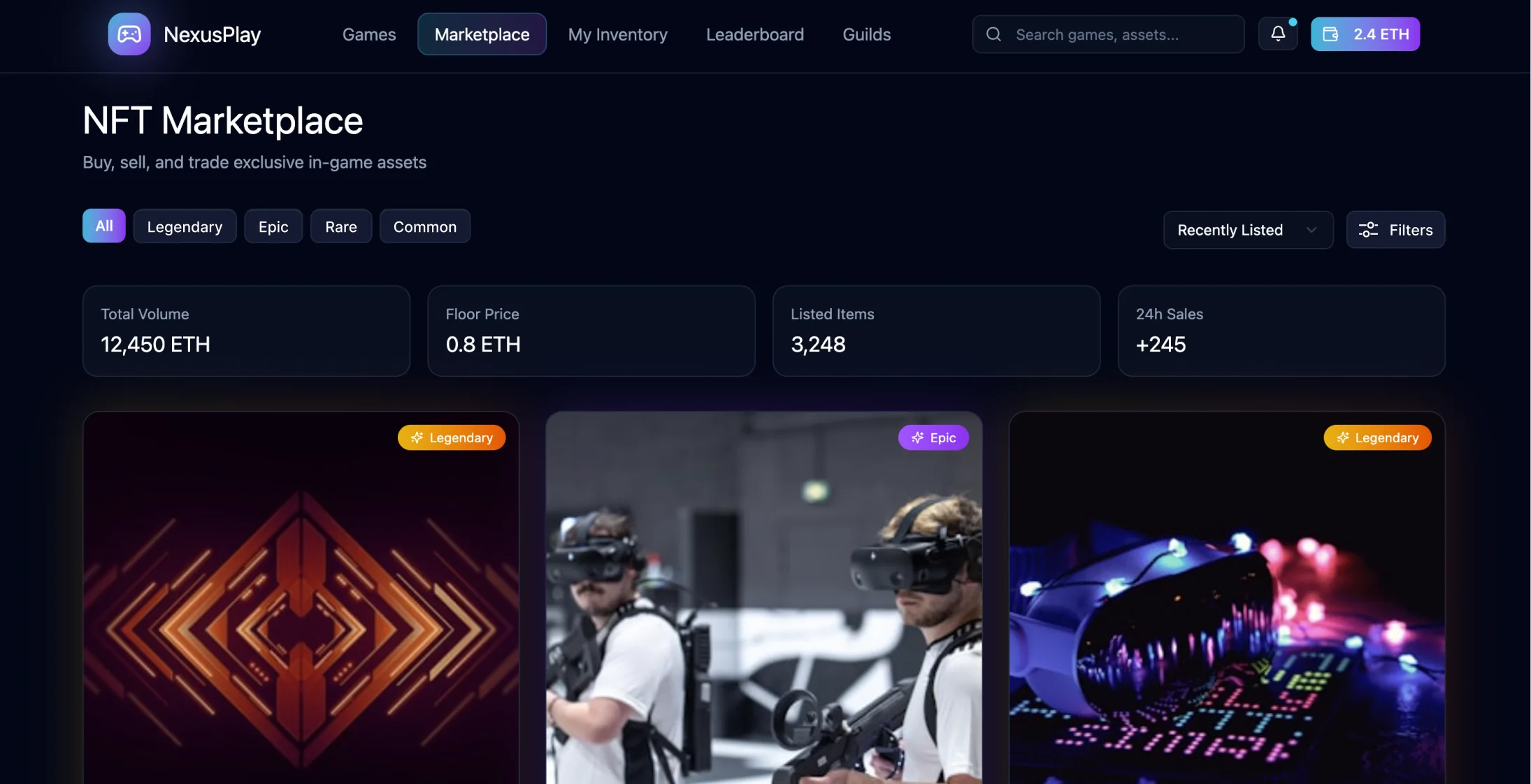
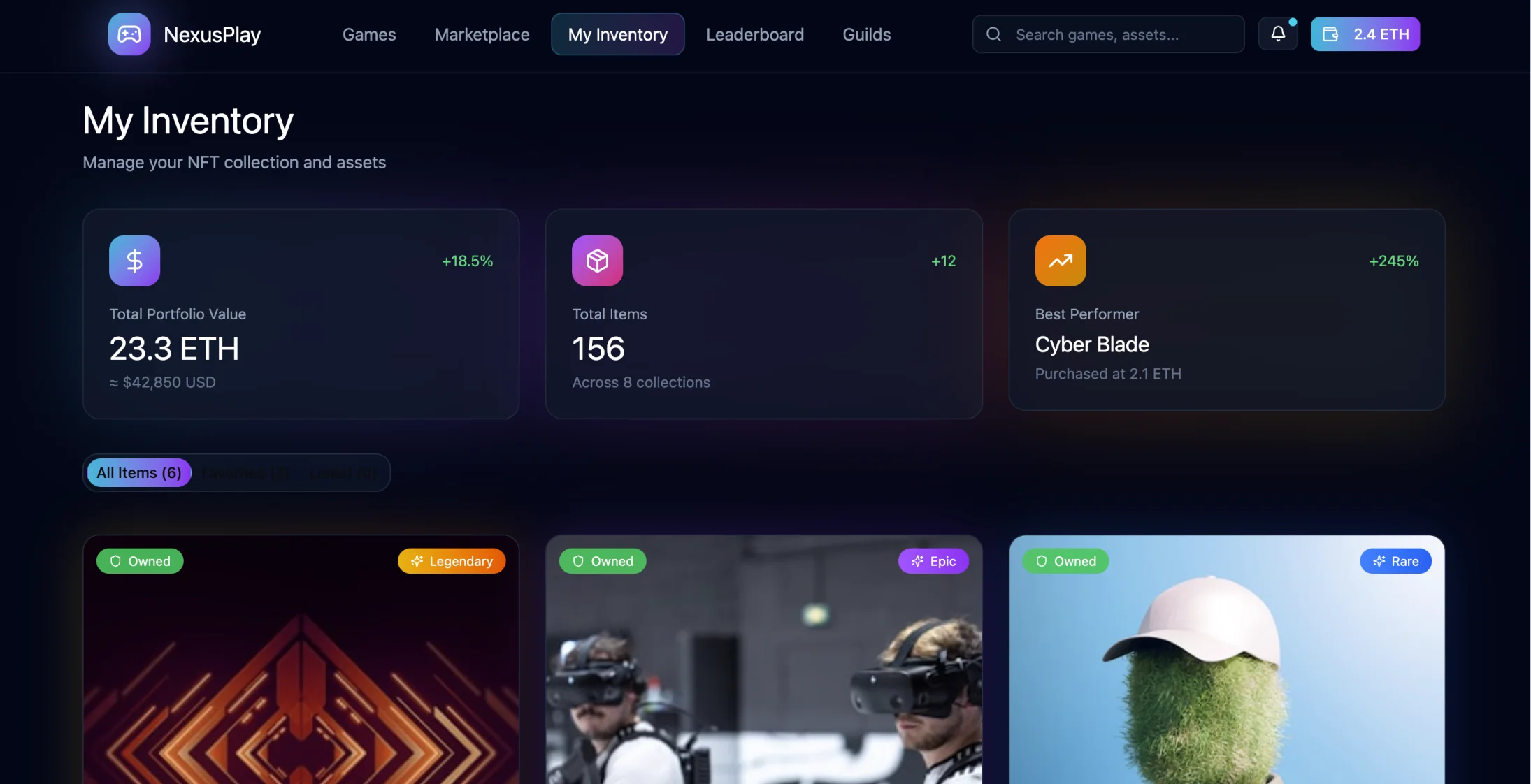
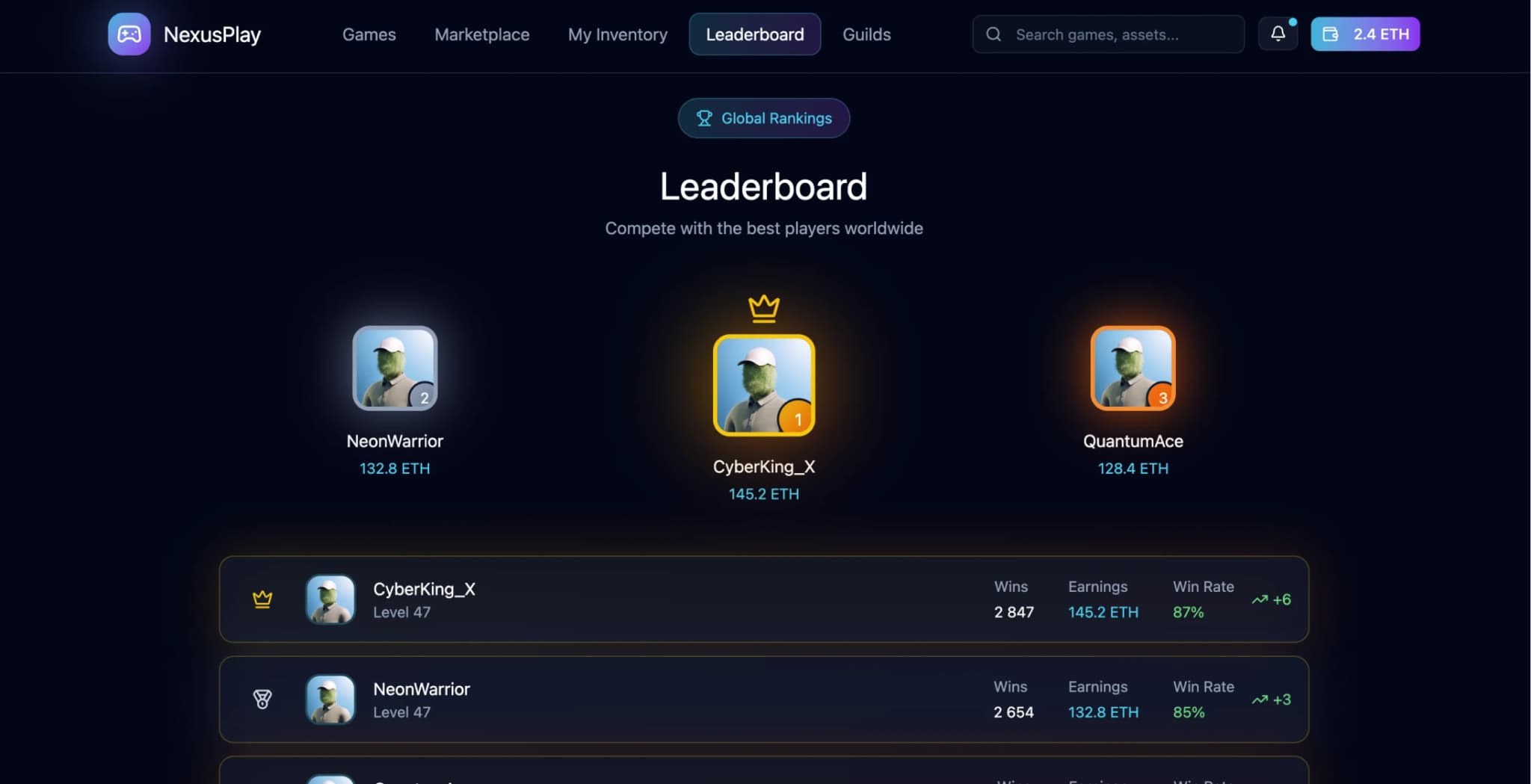
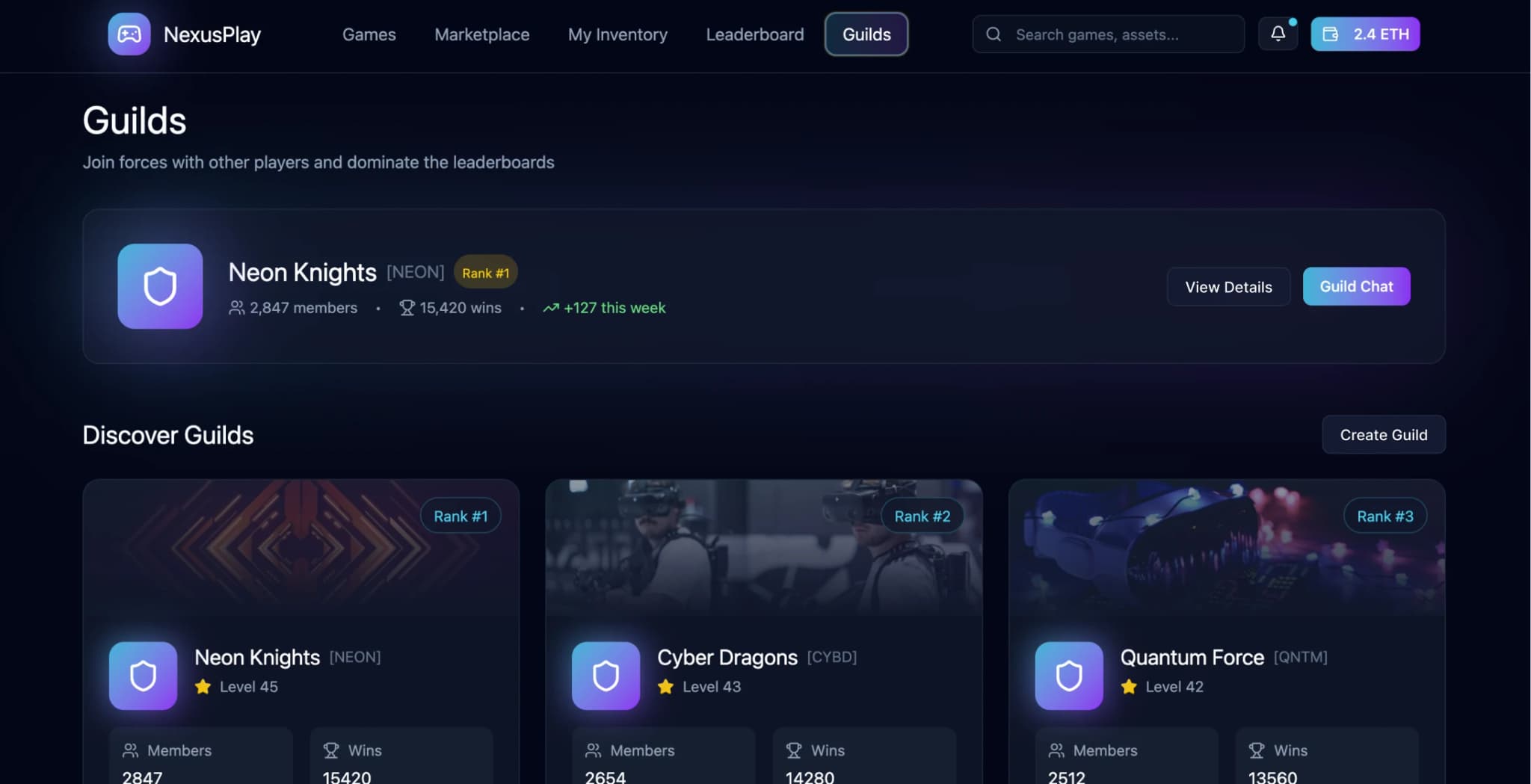
Project Overview
We developed a revolutionary blockchain gaming platform that addresses the traditional challenges of performance and accessibility while delivering exceptional gaming experiences. Our solution successfully merged interactive gameplay features with true asset ownership, facilitating high-frequency trading and real-time interactions for over 100,000 concurrent players. The platform achieved remarkable performance metrics including 850ms transaction finality and 99% availability, while reducing infrastructure costs by 42% through innovative technical architecture and economic design.
Traditional Blockchain Gaming Challenges
Traditional blockchain games faced challenges with performance issues and restricted accessibility. This made it difficult for them to provide top-tier gaming experiences while offering benefits.
Many blockchain gaming initiatives focused more on token economics than enhancing user experience, leading to poor adoption rates.
Platform Development and Performance
A scalable gaming platform has been developed that merges interactive gameplay features with asset ownership. This platform facilitates high-frequency trading and real-time interactions for users.
Key Performance Metrics:
- Successfully achieved a transaction finality of 850 milliseconds
- Platform availability at 99%
- 42% reduction in infrastructure costs
- Accommodating over 100,000 concurrent players
Industry Challenges and Solutions
Initial Platform Problems
The gaming sector has seen changes to incorporating blockchain technology. Initially launched play-to-win platforms faced challenges such as:
- High gas fees
- User-unfriendly interfaces
- Gameplay that seemed tedious rather than enjoyable
Technical Complexity
The complexity goes beyond the technical side; it also involves:
- Economic planning
- Ensuring regulatory adherence
- Sustainable token ecosystems
- High transaction volumes without compromising decentralization or security
Economic Impact and Metrics
Cost Reduction and Revenue Growth
Player Acquisition Expenses decreased by 35%, achieving savings through expansion driven by incentives and asset ownership rather than relying on conventional advertising expenditures.
Transform Your Gaming Economics
Discover how blockchain integration can reduce costs and increase player lifetime value.
By implementing revenue sources like marketplace fees and premium asset sales along with transaction processing services, this strategy has increased the lifetime value of each user by 40%.
Community Development
Developed a community by implementing stakeholder ownership models that led to a 45% decrease in churn when contrasted with free-to-play games.
Using contracts to game logic led to a 70% decrease in manual content moderation and allowed for quick feature updates.
Technical Architecture
Platform Structure
The structure of the platform separated game logic from blockchain interactions through a blend of methods:
- Primary gameplay functioned on tuned game servers for quick user response times
- Asset ownership and transactions took place on-chain for transparency and security
- Layer 2 scaling solutions managing frequent transactions
- Periodic transfers to the main chain for settlement purposes
Smart Contract Design
The design of contracts focused on:
- Optimizing gas usage
- Easy upgrade capability without affecting operations
- Modular structure allowing seamless feature additions
- Off-chain processing for game state computations
- Cryptographic validations for data security
Technology Stack
Game Client and Infrastructure
Core Technology Components
| Component | Technology | Purpose |
|---|---|---|
| Game Client | Unity with Web 2.0 wallet | Blockchain network support |
| API Gateway | REST and WebSocket | 50K+ connections management |
| Multiplayer Server | Node.js clusters | Real-time game state sync |
| Database | PostgreSQL with Redis | Session management and leaderboards |
Security and Development
Security Protocols
Security protocols encompassed:
- Signature wallet safeguards
- Encrypted communication channels
- Regular smart contract audits
- Monitoring of gas consumption and transaction performance
Development Approach
The project was developed using an agile approach that involved:
- Two-week sprints
- Community feedback incorporation
- Cross-functional teams including blockchain developers, game engineers, smart contract auditors, and economic designers
Testing and Deployment
Comprehensive Testing Strategy
We utilized a testing approach that covered:
- Standard software testing methods
- Blockchain-specific scenarios
- Load testing for high-volume periods
- Security testing including contract fuzzing
- Economic attack simulations
- Closed beta programs with iterative feedback
Migration and Risk Management
The planning for migration involved:
- Asset transfer considerations
- System compatibility maintenance
- Upgrade procedures for contract enhancements
- Rollback procedures for critical issues
- Insurance measures for contract risks
- Treasury diversification across various assets
Results and Future Outlook
Performance Achievements
The platform made significant advancements in:
- Performance enhancements for users
- Economic metrics optimization
- Transaction processing improvements
- Lower blockchain interaction expenses
- Gaming responsiveness aligned with conventional online games
User engagement exceeded expectations with sustained growth trends and evidence of healthy token flow within the ecosystem.
Economic Model Refinement
Creating an economic model involves finding the right mix of:
- Player incentives
- Long-term system viability
- Community governance participation
- Sustainable economic frameworks
Gas efficiency played a crucial role in enhancing user satisfaction levels. Batching tasks and leveraging layer-two solutions substantially decreased expenses.
Key Learnings
Smart Contract Development
Smart contract upgrade mechanisms added complexity to the process. Proxy patterns allowed for:
- Bug fixing capabilities
- Feature additions
- System state continuity
- Balance between security and development speed
User Onboarding Optimization
Despite optimizing, there were still challenges with getting players on board smoothly. Key improvements included:
- Enhanced wallet creation processes
- Gasless transactions for users
- Educational resources and interactive guidance
- Cross-chain compatibility implementation
Anti-Fraud Measures
Constantly evolving anti-sybil measures are necessary as attackers adjust their strategies over time. Machine learning techniques for behavior analysis proved superior to rule-based systems in effectiveness.
Community-driven reporting mechanisms play a crucial role in identifying attack patterns and maintaining platform integrity.
Project Results
- 850ms transaction finality achieved
- 99% platform availability maintained
- 42% reduction in infrastructure costs
- 100,000+ concurrent players supported
- 35% decrease in player acquisition costs
Key Performance Metrics
Transaction Finality
Average transaction confirmation time
Platform Availability
System uptime achievement
Cost Reduction
Infrastructure cost savings
Concurrent Players
Supported active users

